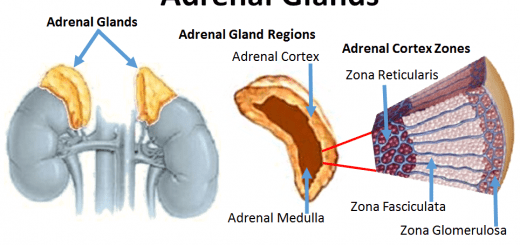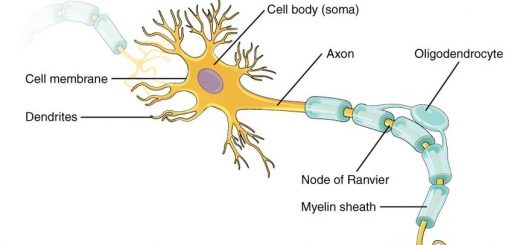Ear anatomy, structure, function, Relations of middle ear and Action of Auditory muscles
Our hearing is the most important sense used for communication, The ear is used for hearing & balance, it receives sound waves and transforms them into proper sounds, making sense to us, It is used for language learning, Hearing can decode & reproduce the intonations, rhythms, and accentuations of a heard sentence, hearing enables us to respond in the most suitable way using what our auditory system and brain have learned.
Anatomy of ear
The ear is the organ of hearing. It contains the organ of equilibrium: the vestibular apparatus. It consists of 3 parts:
- External ear.
- Middle ear (tympanic cavity).
- Internal ear (labyrinth).
External ear includes:
I. Auricle (ear pinna)
It is formed of elastic cartilage covered on both sides by the skin, It projects from the side of the head. A branch of the vagus nerve supplies the skin of the auricle near the external acoustic meatus, The Ear pinna collects the sound waves into the external acoustic meatus.
II. The external acoustic meatus
The external acoustic meatus is the canal between the auricle & the tympanic membrane, Its lateral third is cartilaginous while its medial two-thirds are bony, This meatus has an S-shaped curve with 2 constrictions.
- At the junction between the lateral third & medial two-thirds.
- In the bony part (medial 2/3) which equals 5mm from the tympanic membrane. This constriction is called isthmus.
The external auditory meatus is covered with thin skin which is attached firmly to the underlying part. Inflammation of the skin of the meatus leads to severe pain due to great tension on this skin, The subcutaneous tissues of the cartilaginous part (lateral third) are rich in ceruminous glands which secrete cerumen (ear wax). The bottom of the meatus is formed by the tympanic membrane (eardrum). It lies obliquely.
III. The tympanic membrane
The tympanic membrane separates the external ear from the middle ear, It is composed of pars flaccida and pars tensa. The pars tensa forms the great part of the tympanic membrane; it is tighter and stronger than the pars flaccida, When examined by the autoscope or direct light the antero-inferior part of the membrane appears bright, forming what is called a cone of light, The tympanic membrane is formed of 3 layers:
- The outer layer formed of skin.
- Middle layer: formed of fibrous tissue containing the handle of the malleus and chorda tympani nerve (a branch from the facial nerve).
- Inner layers: formed of mucous membranes.
A branch of the vagus nerve supplies the outer surface of the membrane, while the inner surface is supplied by the glossopharyngeal nerve (through the tympanic plexus).
Middle ear
The middle ear is a small cavity in the temporal bone in the skull, It lies medial (at the inner aspect) to the tympanic membrane and lateral to the inner ear, It has six walls, The middle ear is connected to the nasopharynx by the auditory tube (Eustachian tube) so it contains air.
It contains also small mobile bones called ear ossicles, which transmit the sound vibrations from the tympanic membrane to the inner ear. They are 3 ear ossicles called the malleus, incus, and stapes arranged from lateral (tympanic membrane) to medial (inner ear). The mucous membrane of the middle ear is supplied by a branch from the glossopharyngeal nerve.
Relations of the middle ear
- The medial wall is related to the facial canal, The oval window is covered by the footplate of the stapes, The cochlea & the round window which is covered by a secondary tympanic membrane.
- The lateral wall is related to the tympanic membrane.
- The roof is formed by the tegmen tympani of the temporal bone.
- The floor is related to the jugular bulb (bulb of the internal jugular vein) & tympanic branch of the glossopharyngeal nerve.
- The anterior wall (carotid wall) is related to the internal carotid artery, auditory tube, and canal of the tensor tympani muscle.
- The posterior wall (mastoid wall) is related to the facial canal stapedius muscle aditus to the mastoid antrum.
Auditory muscles
- The tensor tympani is related to the auditory tube, It is supplied by the mandibular nerve.
- Stapedius is attached to the stapes, It is supplied by the facial nerve.
Action of the auditory muscles
The two muscles contract reflexly in response to high-intensity sounds to diminish the transmission of sound vibrations to the inner ear.
Applied anatomy
In tonsillitis and following tonsillectomy, there is referred pain in the middle ear due to the fact that the glossopharyngeal nerve supplies both the oropharynx and the middle ear.
In case of facial paralysis, the patient complains of hyperacusis, due to paralysis of the stapedius muscle. Sound vibrations are transmitted to the inner ear through the stapes without any diminution achieved by the stapedius muscle.
You can subscribe to Science Online on YouTube from this link: Science Online
You can download the Science Online application on Google Play from this link: Science Online Apps on Google Play
Histological organization of vestibular apparatus, Hearing importance and body Equilibrium
Physiology of equilibrium, Hearing, ear balance, Function and Stimulants of Semicircular canals
Auditory system structure & function, Auditory apparatus, cochlea and cochlear duct
Hearing, Transmission of sound waves in Cochlea, Functions of Cochlea and Auditory pathway













